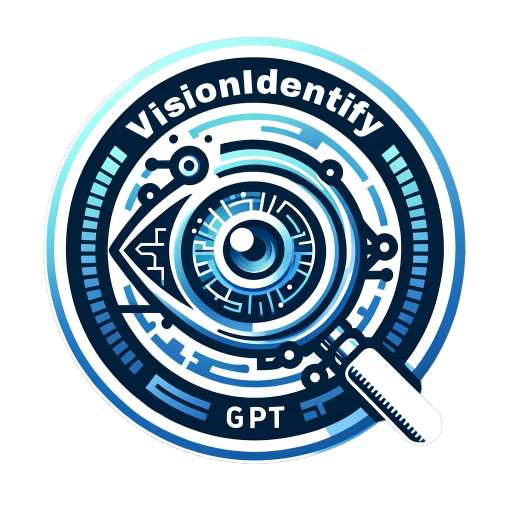Image Intelligent Description-detailed image analysis tool.
AI-powered insights for your images.
Can you describe this image?
What's in this photo?
Tell me about this photo.
Explain the elements in this image.
Related Tools
Load More
Describe Image
Describe images with a precise word count.

Image Analyzer
Describes uploaded images with accuracy and detail.

Describe Image
I create detailed prompts for DALL·E 3 based on your images.

🔍 VisionIdentify GPT: Image Recognition AI
Revolutionize image analysis with VisionIdentify GPT, the AI that identifies and informs. For optimal results, please upload your image and provide concise yet detailed descriptions. See the Unseen, Know the Unknown with VisionIdentify.

Accurate Image Describer
I expertly describe images with detailed, structured analysis.

ImageWords AI
The AI assistant creates brief descriptions and keywords for stock images, enhancing their searchability on photo platforms. Just Upload your first image!
20.0 / 5 (200 votes)
Introduction to Image Intelligent Description
Image Intelligent Description (IID) is a specialized AI service designed to analyze and describe the content of images with high detail and accuracy. Its primary function is to provide comprehensive visual insights by identifying objects, interpreting scenes, and offering context-aware explanations. This service is particularly useful for users who require an in-depth understanding of visual content without relying on the images themselves, such as those with visual impairments or professionals needing detailed image analysis. For example, in a scenario where a user uploads a photo of a busy street scene, IID will not only identify visible elements like cars, pedestrians, and buildings, but also provide contextual information such as the time of day, the likely location type (urban, suburban), and any visible advertisements or signs. The design purpose of IID is to enhance accessibility and provide users with a rich, descriptive experience of visual content, enabling them to make informed decisions based on the provided information.

Main Functions of Image Intelligent Description
Detailed Image Description
Example
A user uploads a photo of a complex architectural structure.
Scenario
IID describes the structure by identifying its architectural style, materials used, surrounding elements like trees or water bodies, and any notable features like sculptures or inscriptions. This is particularly useful for educational purposes or for professionals in architecture and design who need a precise understanding of the image's content.
Contextual Scene Interpretation
Example
A user shares an image of a social event such as a wedding.
Scenario
IID identifies the event type, describes the attire of participants, the decorations, and the setting. It might also infer the cultural or regional context based on visible elements. This function is beneficial for content creators, journalists, or event planners who require a detailed understanding of the visual elements to convey accurate information.
Object Identification and Annotation
Example
A user uploads a product image for e-commerce listing.
Scenario
IID can identify the product, its key features, and surrounding elements, providing a detailed description that can be used for product listings, cataloging, or quality control purposes. This function is particularly useful for e-commerce businesses, inventory managers, and marketers who need accurate and detailed product descriptions.
Ideal Users of Image Intelligent Description
Individuals with Visual Impairments
IID serves as a powerful tool for visually impaired users who rely on detailed descriptions to understand visual content. By providing rich and comprehensive descriptions of images, these users can engage with visual media, enhance their learning experience, and interact more fully with digital content.
Professionals in Creative Industries
Creative professionals such as designers, marketers, and content creators benefit from IID by receiving detailed analysis and insights into images. This aids in tasks like content creation, market analysis, and trend spotting, enabling these professionals to make data-driven decisions and enhance their creative output.

How to Use Image Intelligent Description
1
Visit aichatonline.org for a free trial without login, also no need for ChatGPT Plus.
2
Upload the image you want analyzed. The tool accepts various image formats, including JPEG, PNG, and GIF.
3
Specify any particular details or elements in the image that you want to focus on. This helps the tool provide more accurate and tailored descriptions.
4
Review the generated description. The tool will provide a comprehensive breakdown of the image, detailing everything from foreground objects to background elements.
5
Use the description for your intended purpose, whether it's for content creation, accessibility improvements, academic research, or personal interest.
Try other advanced and practical GPTs
GHL CRM Manager Bot
AI-powered guidance for CRM excellence.

AI Guardian Angel
AI that handles the boring stuff.

RH Ultragaz Helper
AI-powered payroll slips made simple.

Biomedical Engineering Expert
Empowering Biomedical Insights with AI

🤖 HormoziGPT
AI-powered business mentor for strategic growth.

Botpress Wingman
Enhance chatbot creation with AI

Coupon Finder
AI-powered tool for finding top deals.

Carnivore Companion
AI-powered guide for the carnivore lifestyle.

室内设计Pro Buddy
AI-powered interior design assistant

Coding Assistant
AI-powered tool for coding made easy

FREE AI SEO Internal Link Building Tool
Enhance SEO with AI-powered internal linking

Sales Page Headline Guru
AI-powered tool for impactful sales page headlines.

- Content Creation
- Research
- Analysis
- Documentation
- Accessibility
Frequently Asked Questions about Image Intelligent Description
What types of images can I analyze with this tool?
You can analyze a wide range of image types, including photographs, illustrations, screenshots, and even complex scenes. The tool supports formats like JPEG, PNG, and GIF.
How detailed are the descriptions provided by Image Intelligent Description?
The tool provides in-depth descriptions covering all visible elements, from objects in the foreground to background details. It also contextualizes scenes, offering insights that go beyond mere object identification.
Can I use this tool for academic purposes?
Yes, Image Intelligent Description is well-suited for academic applications, such as creating detailed image analyses for research papers, enhancing accessibility in educational content, or assisting in visual data interpretation.
How can I optimize the image analysis?
For the best results, ensure your images are clear and well-lit. If you need specific details, mention them before analysis, so the tool can focus on those aspects and provide a more tailored description.
Is there a limit on the number of images I can analyze?
There is no strict limit on the number of images you can analyze. However, for bulk processing, it's recommended to process images one at a time to ensure detailed and accurate descriptions.